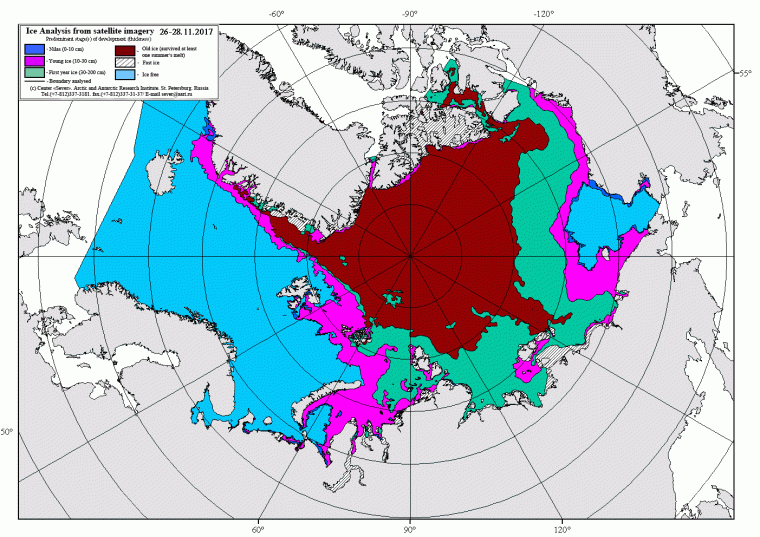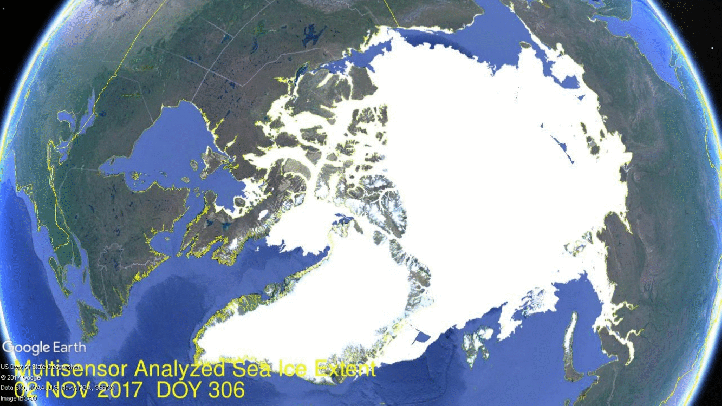- Date: 04/12/17
- Ron Clutz, Science Matters
Latest observations show that Arctic sea ice extent has not declined in the last decade
Given the fluctuations in daily sea ice measurements, climatology typically relies on monthly averages. November daily extents are now fully reported and the 2017 November monthly results can be compared with years of the previous decade. MASIE showed 2017 reached 9.7M km2, 0.2M below the 9.9M November 10 year average. SII was slightly lower at 9.5M for the month. The 10 year average for SII is about 200k km2 lower than MASIE, with a similar differential appearing in 2017. In either case, one can easily see the Arctic ice extents have not declined in the last decade. MASIE shows 2017 matching 2007, higher than 2012 by 200k km2, and 844k km2 more than 2016.
Sea Ice Index statistics are from recently released SIIv.3.0, as reported in Sea Ice Index Updates to v.3.0.
The graph below shows November comparisons through day 334 (Nov. 30).
Note that 2017 in both MASIE and SII tracked the 10 year average, slightly lower throughout. SII is now about 240k km2 less than MASIE. 2012 grew strongly to approach the 10 year average, recovering after being decimated by the August Great Arctic Cyclone. 2007 lags behind, and the lackluster 2016 recovery is also evident.
The narrative from activist ice watchers is along these lines: 2017 minimum was not especially low, but it is very thin. “The Arctic is on thin ice.” They are basing that notion on PIOMAS, a model-based estimate of ice volumes, combining extents with estimated thickness. That technology is not mature, with only a decade or so of remote sensing. The image below from AARI shows widespread thick ice at end of November 2017.
The formation of ice this year shows solid concentrations in the central Arctic. Watch the November refreezing of Arctic marginal seas from the center outward.
Click on image to enlarge.
At the top, open water in Chukchi is shrinking while neighboring Beaufort and East Siberian seas freeze completely. On the left, Hudson Bay starts with fast ice on the western shore, now growing extent strongly. On the right, Kara ice cover is 90% complete.






